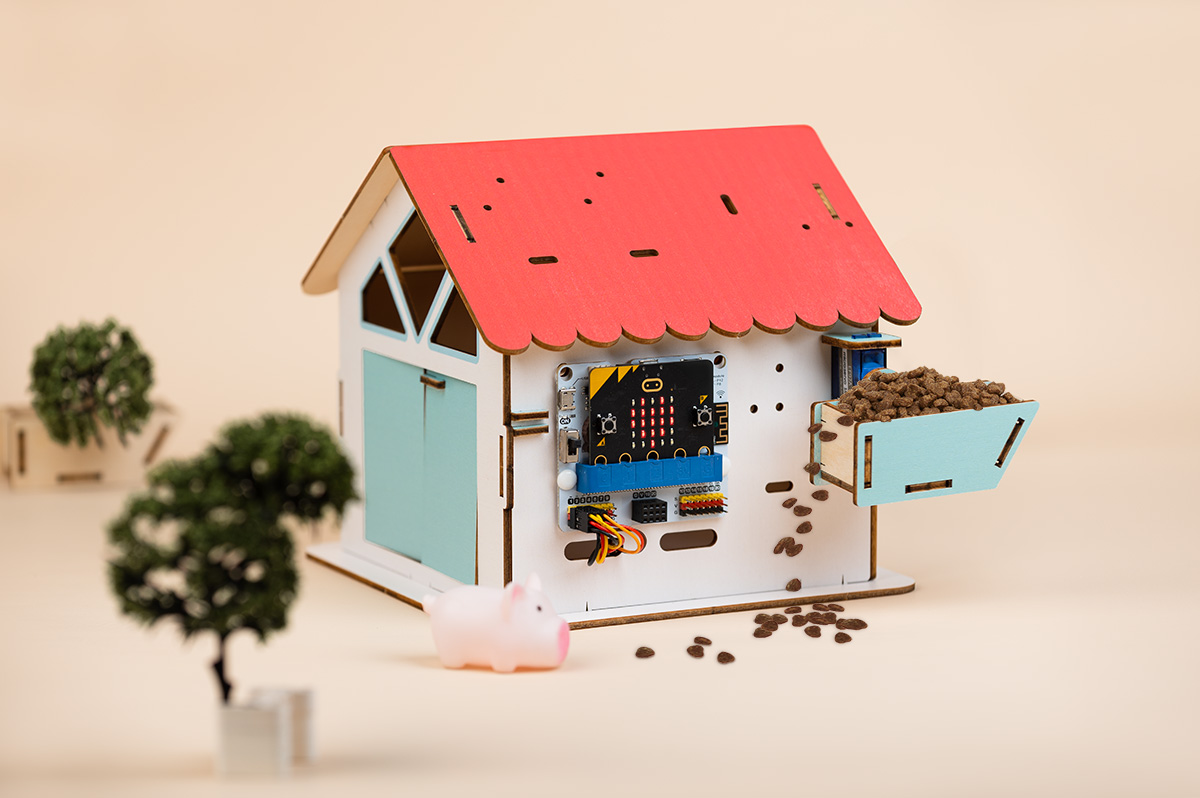index
In this post, we are going to introduce a case study of creative making for primary and secondary school students - Smart Pet Feeder. This feeder uses a micro:bit v2, an IOT:bit expansion board, a PIR sensor from the Octopus series as well as a Sonar:bit, a 180° 9g servo, and a cute little wooden house as components.
The working principle of the smart pet feeder is as follows: firstly, the PIR sensor is responsible for detecting whether it is a pet approaching or not; secondly, the sonar:bit is used to detect whether the pet reaches within 20cm in front of the wooden house. When both of these conditions are met, the servo will rotate, which will cause the storage box for pet food to dump out the pet food. After the process of dumping the pet food is completed, the servo will return to its original position and wait for the next feeding.
This smart pet feeder aims to cultivate primary and secondary school students' innovation and hands-on ability, and at the same time deepen students' understanding of programming knowledge by writing programmes to control the work of the feeder. In addition, this case is also conducive to cultivating students' awareness of caring for pets, so that they can care more about and take care of small animals at home.

Catalogue
📄️ Products Introduction
In this post, we are going to introduce a case study of creative making for primary and secondary school students - Smart Pet Feeder. This feeder uses a microbit expansion board, a PIR sensor from the Octopus series as well as a Sonar:bit, a 180° 9g servo, and a cute little wooden house as components.
📄️ Packing List
📄️ Hardware Introduction
micro:bit Introduction
📄️ Smart Pet Feeder
Functions Introduction